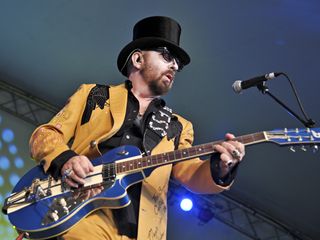
Production legend Dave Stewart discusses 17 career-defining records
During his illustrious, 30-years-and-counting career, Dave Stewart has spent as much time behind the studio glass as in the tracking room. Yet for all of his success as an across-the-board music maker (over 75 million records sold with the Eurythmics alone), he admits that he still doesn't see himself as a producer in the traditional sense.
“Usually, I'm co-writing and producing and performing," Stewart says, "so I'm not like, you know, ‘that guy’ sitting there telling everybody what to do. I like being in the middle of all the activity. What happened with me was, I was producing the Eurythmics records, and people started listening to them and going, ‘Hey, we like those a lot.’ Before you knew it, I was being asked to produce records for other artists. But that wasn’t my plan."
In Stewart's view, it is dual-role approach as both artist and producer that has given him a much-needed insight into the recording process that some of his peers don't have. “A lot of producers can play instruments, but they aren’t performers," he says. "Being that I know what it’s like to go on stage with a band, I’m probably thinking like an artist when I produce somebody else’s record. ‘What’s this gonna be like live?’ That kind of attitude can be very useful when you’re trying to create excitement with a track."
Stewart cites one of his biggest hits, Don't Come Around Here No More by Tom Petty And The Heartbreakers (which he co-write, performed on and produced), as a prime example: "There's the part where it explodes into this double-time thing, and the whole band kicks in and it goes into a frenzy. It was good for the song, but I was probably also thinking, ‘Hey, this will really work live, too.’”
On the following pages, Stewart talks about his work with Tom Petty And The Heartbreakers as well as a host of other notable artists and albums that he has helped shape – even some of his own. "In some ways, what I do is like being a dentist," he jokes. "I have to get something out of an artist."
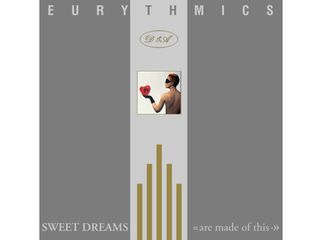
Eurythmics - Sweet Dreams (Are Made Of This) (1983)
“I had dabbled in production before. On the Eurythmics album In The Garden, there was a German producer, Conny Plank, who taught me an awful lot. He mixed and engineered and produced, and he demystified many things for me. He said to me, ‘Here, you can touch the board. And here’s how you cut up tape,’ and so on.
“When it came to the Sweet Dreams album, there was another chap named Adam Williams, who was the bass player for the band The Selector. He knew how to engineer, and so I learned a lot of other things from him. I started to really understand how the board worked and to not be afraid of it; to not mind overloading it or doing delays that went into feedback and started to distort. Dub records had all of that, so why shouldn’t other records?
“We had one small TEAC eight-track recorder, one Bel noise reduction system, one Klark Technic spring reverb, a Soundcraft 16-input desk and a Roland Space Echo. That was about it. And I would spend hours experimenting between the sessions, sometimes till four in the morning, making the weirdest tapes. They weren’t anything that I meant to release; I just liked making mad noises. It was a great way to learn, though. Just as photographers have to go out and shoot some pictures to develop their craft, it’s the same with people who work with sound.
“Sweet Dreams had a lot of experimentation. There’s a song on the album that not too many people talk about called The Walk, and on just seven tracks – ‘cause one track was a sync tone – it’s got all sorts of little horn sections and Annie with loads of harmonies. On The City Never Sleeps, I went out and got the sounds of the Camden Underground station. With the screeching of the tube train wheels, I mixed in slide guitar.
“There was one young A&R guy at the label who kept hammering the people above him, saying, ‘These two are going to make something groundbreaking.’ I think they were like, ‘Yeah, well, when are we gonna hear it?’ When we finally delivered the record, nobody knew what to think because it was so unusual. They put out songs that we didn’t really think were singles. We always thought the song Sweet Dreams (Are Made Of This) would be a huge hit, but it wound up being the third single that was released in Britain.”

Eurythmics - Touch (1983)
“We made a lot of albums very quickly. We’d write the songs and record them at the same time. Sweet Dreams was made half at a picture framing factory, in the attic, and half in this small entrance to a church. By the time we did Touch, Sweet Dreams had been a hit, so we bought the church.
“We got grander on this album, and we had all sorts of orchestration. It was very exciting for us to have a lot more space to work in; we could move around to different rooms in the church instead of being confined to his 10 foot by 10 foot entrance. The album took about three weeks in all. We had just been on a massive tour, and we were about to go out again, so we did the record between tours.
“We got a 24-track Soundcraft tape machine and maybe a slightly larger desk, but we didn’t ratchet up much else the gear-wise; in fact, for the album after this, Be Yourself Tonight, we did the opposite of most bands and went straight back to the eight-track that we’d used for Sweet Dreams.”
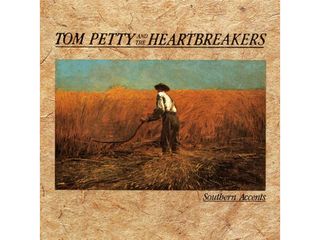
Tom Petty And The Heartbreakers - Southern Accents (1985)
“This was in the middle of chaos. Annie and I were at the top of our game, but there was a point where she had been told that if she didn’t stop singing or talking on the telephone that she would have to have an operation on nodes on her throat. That’s why we missed doing Live Aid.
“I was writing Don’t Come Around Here No More for Stevie Nicks to sing – I had the sitar and everything. She was working with Jimmy Iovine at the time. Tom Petty came by the studio, and he said, ‘Oh, I want to cut this song.’ We went to the garage studio under his house, and we did it there. His band were like, ‘What’s this?’ It was all my backing track until the end; I had done all of that with a drum machine in a hotel room in San Francisco.
“There’s a lot on the track. I did the guitars and the sitar, some cello and viola. Tom put his vocals on in his garage, and then the band came in and did their part at the end, playing in double time. Tom and I became great friends after this, hanging out and stuff. I think he’d been having a crisis, a bit of a roadblock finishing the album. But Tom just said, ‘Oh, fuck it, let’s make a record.’ It was kind of weird, though – the album is called Southern Accents, and there’s me playing the sitar.
“The record altered Tom’s perception about being filmed, too. Before this, the band would just play in their videos, but I was like, ‘This video should be crazy, like a Mad Hatter.’
“The band might have been a little, ‘My God, what’s happening?’ at first. But you know, when the video came out and the song went ballistic on the radio, everybody felt pretty good. Suddenly, the tours were sold out, and everything went to a much bigger level.”
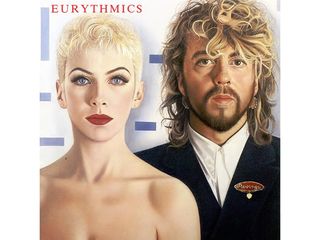
Eurythmics - Revenge (1986)
“We took off so quickly and did so many things in a four-year-period. We were making the kind of music for these big places and huge stadiums, but I started to want to do more of a rock album. Rather than do what we normally did – Annie and I working together and inviting odd people to play on things – this time we went to a studio with players and cut it like a band performing live on stage.
“We had Clem Burke on drums, and we flew in certain people like Jimmy ‘Z’ Zavala. The idea was to record with the band that we would tour with, and that’s what we did. The Revenge tour was our biggest tour, and this was our biggest-selling album outside of our Greatest Hits.
“The funny thing about Eurythmics was, we had to release different singles for different countries. Missionary Man was more of an American track, and it was huge, but they didn’t really comprehend it in the UK. That seemed to happen with us. We had a song called There Must Be An Angel (Playing With My Heart) [from the album Be Yourself Tonight], that was number one all over the world, but I don’t even it was even released in America.”
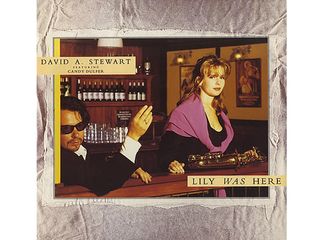
David A. Stewart featuring Candy Dulfer - Lily Was Here (1989)
“This was to a movie by a director named Ben Verbong. He kind of said to me, ‘Just do your thing.’ I found this very young girl, Candy Dulfer, a saxophonist who was just 17 or 18, and I got together with her. There were about five or six of us doing a kind of stretched-out jazz, minimalist score.
“I wrote the theme that became a huge international hit. It was wonderful. Candy was terrific. We became great friends, and we have fun jamming together. I’d love to do another score with her.”
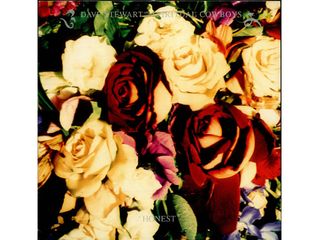
Dave Stewart And The Spiritual Cowboys - Honest (1991)
“The first Spiritual Cowboys album was produced by Chris Thomas. I had just come out of the Eurythmics, producing 10 albums in a row or something, so I wanted to have somebody else’s perspective. Chris is an amazing producer, and he’s done some of my favorite records. For the second one, he was busy producing INXS, so I did this one myself in my house in France with the band playing live.
“I had created a great little band, with Martin Chambers from the Pretenders on drums. We also had Olle Romo on drums, so he and Martin played a double drumming kind of thing, much in the way that Ringo Starr did with Jim Keltner. It was a terrific band – Nan Vernon on guitar and backing vocals, Jonathan Perkins on keyboards, John Turnbull on guitar from the Blockheads.
We’d done a lot of live work, so we made a record that was very much us just playing. I didn’t want typical session people in the band. It was the beginning of me liking playing live again, which then led to The Blackbird Diaries. There’s a lot of tracks on this record that I really love – Fade Away, Cat With A Tale. That last song is very experimental; it has people making tea in the kitchen and a cat meowing.
“I never cared what the record label thought about anything, singles and what not. I’m still sort of like that. Even with the Eurythmics, we delivered a lot of albums with singles, but we never thought, ‘Hey, we’re making a single.’ I always thought more like Pink Floyd.”
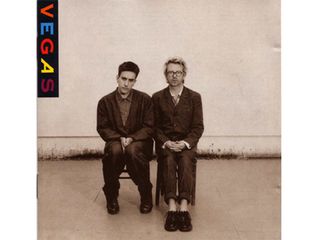
Vegas - Vegas (1992)
“This was great fun. Terry and I are friends, and we decided to do this with an English sense of humor. We called ourselves Vegas, so right there is an example of that. We wanted to do what we were calling at the time ‘electro-dub,’ so it was electronic with a reggae feeling and very esoteric songs.
“We got some great tracks out of it, and we made a couple of odd, quirky videos. We decided to be over to the top, which was the opposite of how we were, especially with Terry coming out of The Specials and Fun Boy Three. The idea was just to send everything up.
“It was a one-off project, but we did play live a couple of time. This was the last thing that I delivered to BMG Records, who I was tied to through the Eurythmics contract. It’s one of my favorite collections of music, really, quite unexpected. It doesn’t sound like anything else.”
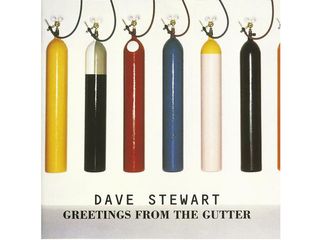
Dave Stewart - Greetings From The Gutter (1994)
“This is my first solo record. I made it in New York at Electric Lady Studios, and I chose an interesting group of players to work with me. I had Bootsy Collins on bass, Jerome ‘Big Foot’ Brailey on drums and Bernie Worrell on keys. You’d look at those names and think, ‘Oh, he’s making a funk record,’ but I didn’t. It’s a really trippy Bowie meets whomever sort of thing.
“As is typical with me, there were all sorts of artists coming by and playing on it. I was really good friends with Lady Miss Kier, and she came in with some girls from Harlem to do backing vocals. Mick came down, so he’s singing a bit.
Lou Reed plays guitar, Laurie Anderson whispers strange things on it – it became this big experimentation record. One day, David Sanborn came in and said that he would like to play saxophone on a track, and I said, ‘Well, can you have an argument with Carly Simon at the end?’ So they did; it’s a song called Oh No, Not You Again. They argue like crazy. The record label was like, ‘Hang on, this is weird. People arguing on a record?’ But I said, ‘Oh, no, it’s really cool.’
“The label was never behind the record, really. It got great reviews in Rolling Stone and various places. Without the label doing anything, a single called Heart Of Stone started to be played on the radio in Europe, and it became a massive hit. After that, people began to discover the album.”

Bryan Ferry - Frantic (2002) and Olympia (2010)
“One record kind of bleeds into the other one. Bryan is an artist who is constantly working, and things you might do for one album come out on another album years later. Bryan and I are kind of like a work-in-progress. He spends a lot of time fiddling with things to get them exactly the way he wants them to be, and that might take four, five years. By that time, I’ve moved to another country and had two children.
“He doesn’t do demos, really. He’s a little like me in that the original recording is there in one way or another; he rarely recuts it. The demo is the actual master, but it might go through lots of permutations. It might have had 12 different basslines and four different drummers, and sometimes it goes back to the original idea.
“We worked with some fantastic artists on the records. When you’re very respected, as Bryan is, people want to be a part of it. Plus he meets a lot of people, just like I do. Sometimes it’s just a matter of people coming by to have a listen, and then they say, ‘Hey, what if it went like this?’ Before you know it, they’re playing on a track.
“I think I brought him close to a minimalist kind of feeling. There’s a song that I wrote with him called San Simeon, and it’s a little spooky, a sort of wasted, elegant vibe, with echoey hallways and emptiness. There’s a melancholy attitude to it that I quite like, and it’s there on a few other songs that we’ve done together.”
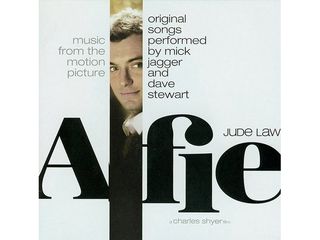
Original Soundtrack - Alfie (2004)
“I was asked to work on the soundtrack, but I said, ‘I’d like to do it with Mick Jagger.’ I thought that Mick and I could write stuff that really related to the character of Alfie, and I thought that keeping the soundtrack kind of rootsy, bluesy, with a ‘60s feel would be better than an epic score. Aflie is a bit of a loner, so the music should fit.
“There’s some great songs on it, like The Blind Leading The Blind, Old Habits Die Hard. We had a lot of fun doing it. We had a script and the rough cut of the film, and we worked very closely with the director [Charles Shyer]. It was very interesting.
“It’s funny: The studio was a little worried about me and Mick; they wanted to bring in a traditional score composer, John Powell, and Mick and I were like, ‘OK, we don’t care. We’re doing this.’
"I’ve done a few soundtracks. I enjoy the process when I’m working with a director who either allows me to do what I want or who knows what he wants. The worst is when you’ve got 26 people who don’t know what they want and can’t explain what they want.”
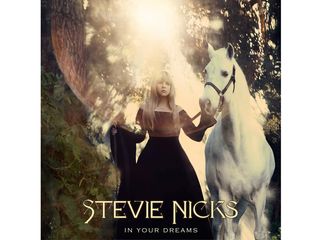
Stevie Nicks - In Your Dreams (2011)
“Stevie and I had messed about on a couple of recording experiments in the ‘80s. Other times, I was in the studio with her while she was recording, but I wasn’t working on it – I was just watching. With In Your Dreams, a full event emerged.
“She had a couple of demos and a few ideas that she played on the piano. Quite a lot of it we made up on the spot, writing six or seven songs together. It was very much a collaboration. She had written so many journals, too, so that was a source that we could draw from. When she does have demos, though, it’s about not losing the essence – that's what I try to keep.
“There was one song called Soldier’s Angel that we could never quite replicate. In the end, we brought in Lindsey Buckingham to play guitar, and the idea was for her to sing and have it be very empty. It was funny: At one point, she said, ‘I’d really like to have Mick Fleetwood to play drums, but then it’ll turn into Fleetwood Mac,’ and I said, ‘Who cares?’
“We had a lot of time to experiment. We were in her house, and we could stop and start whenever we wanted to. It was a crazy time, but it was great. Stevie really let herself go on the record.”
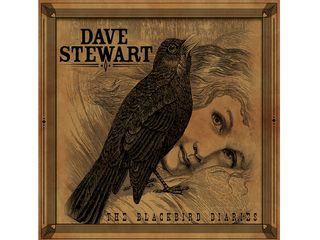
Dave Stewart - The Blackbird Diaries (2011)
“This was such good fun. I had made the film for The Ringmaster General, where you see me arriving in Nashville, not knowing anybody and being sort of inducted into the city’s music gang. I think I was accepted by everybody because I didn’t come in with all the bells and whistles. I just came in and wanted to make a record.
“People like John McBride really helped me choose these great musicians that I’ve used on my last three albums. People would come in the studio and go, ‘What’s going on here?’ I would meet them – whether it was the people from Lady Antebellum or Tina McBride, so many great folks – and we’d hang out and have a terrific time.
“I felt really at home. I’m from the Northeast of England, and I started out playing in these folk and blues clubs, these little pubs and cafes, and Nashville felt like I was going back in time. It’s the world that I understand – singer-songwriters with acoustics, telling stories. I took to it like a duck to water.”

Joss Stone - LP1 (2011)
“She had gone with her dogs in her Volkswagen camper van from England to Spain or Portugal – I’m not sure which it was. She was helping a friend, this guy named Paul Conroy, paint his boat. I rang her up and said that I was in Nashville, and I asked her if she wanted to come over and make a record. She said, ‘I’d love to, but I’m with my four dogs on this boat.’ It became this thing about how the dogs would get babysat.
“She managed to get it all sorted out, and three or four days later she was in Nashville. She had written a song with Paul called Take Good Care, and it ended up on the album. We made a film of the song for Amnesty, which they then used in a massive campaign.
“When Joss arrived in Nashville, she was pretty exhausted ‘cause she had to fly halfway around the world. But we did the record in only five or six days, and it was fantastic. We wrote the songs, recorded them – just boom, boom, boom. The musicians loved Joss’ voice. She really took to working in Nashville, too. I like taking people out of their normal environment. It’s a really creative way to do things.
“This was the first thing she did on her independent label, and it went top five in Germany and France and Denmark. She wasn’t even on tour and didn’t do any promotion for it.”
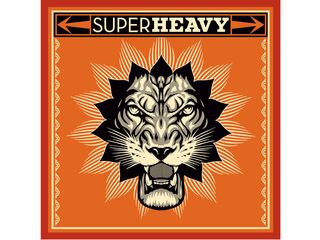
SuperHeavy - SuperHeavy (2011)
“I have a house in Jamaica that I share with a friend of mine. It’s in the hills, but it’s surrounded by villages. The houses from below have these sort of sound systems, so you tend to hear music echoing around. One morning, I heard a DJ who sounded like what you might hear in the Middle East sometimes. I also heard this drum and bass from somewhere else. I thought, ‘Wow, it’s be great to get two or three people from different backgrounds and do something like this.’ But I didn’t want to eliminate rock music or blues.
“It developed from there. I called up Mick and chatted about it, and he said, ‘That sounds interesting.’ He and I thought about who might work well, and we came to the conclusion that Damian Marley sounded good. We knew we wanted a girl voice, and Joss Stone came to mind. She loves Jamaican music, and she can really go for it as a singer. And then I suggested A. R. Rahman, whom I’d known for about 12 years. I invited them all to meet up at a certain place, and everybody turned up. From there, we started jamming. Some of the songs on the album are almost the same as when we jammed them in the big room.
“Damian mentioned the term ‘super heavy,’ because I think Muhammad Ali used to say it. It kind of stuck. Mick and I investigated having the name. Nowadays you have to go through trademarks and stuff like that. We were just a bunch of people experimenting, but I guess some of the people at Henson Studios were like, ‘Holy shit! What’s going on in there?’
“It was a really fun vibe; there were no egos at all. Mick was very into hearing everybody’s ideas, and he had a lot of his own. ‘Hey, that’s great.’ ‘Oh, that’s cool. How about we do this?’ It was very much like he was a collaborator.”
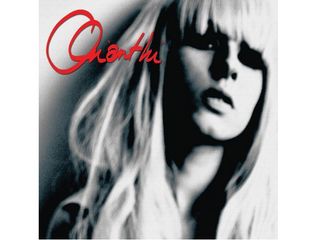
Orianthi - Heaven In This Hell (2013)
“We were friends for about a year and a half. We used to hang out and jam on my back porch. She came to Nashville to watch me in the studio as The Ringmaster General was recorded, kind of as an observer, but she did play on one track. She fell in love with it all, and I said, ‘Well, I could do this with you.’ And so we did.
“We did some EP tracks first, then we did the whole album. She’s such a great blues-rock guitar player, but she was put into a little bit of a ‘pop box’ by the label. It was driving her crazy. When I sat down with her, she told me immediately that she wanted to do something that was close to her heart.
“We recorded live in the room, and she was like, ‘Hooray! I always dreamed of doing it like this.' She’s such a great musician. She can play anything, of course. Every time you do a take with her, she does something completely different, so it’s a matter of capturing that one performance.”
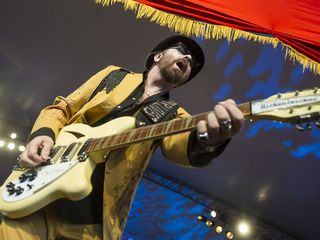
Dave Stewart - Lucky Numbers (2013)
“It’s sort of a continuation of working with the same players, but I’ve brought in a slightly gospel element on some tracks. I have a great choir called the Ringmaster Choir from Englewood, which is part of LA.
“These songs tumbled out of me. We recorded them in the middle of nowhere in the South Pacific – live, in this big setup. It wasn’t the original plan, but it sort of developed and everybody said, ‘Yes, Ringmaster. Onward!’ I don’t like repeating myself, so I like to add crazy twists to things. I worked with the Ringmaster Choir in LA, and the album was mixed in Nashville. So it’s all over the place with this one.
“It’s got a country-blues feeling and, of course, the gospel element. I think it’s my best record yet song-wise.”

Joe is a freelance journalist who has, over the past few decades, interviewed hundreds of guitarists for Guitar World, Guitar Player, MusicRadar and Classic Rock. He is also a former editor of Guitar World, contributing writer for Guitar Aficionado and VP of A&R for Island Records. He’s an enthusiastic guitarist, but he’s nowhere near the likes of the people he interviews. Surprisingly, his skills are more suited to the drums. If you need a drummer for your Beatles tribute band, look him up.

"People were always asking me, but I never used to tell them": Trevor Horn finally dishes out his sampling and drum machine tips in a new studio interview

“How do people do that? No click, he played through it and ‘bam’”: Prince’s ability to keep time when he was recording drums was remarkable, says his engineer, but it also made things difficult during the editing process

"People were always asking me, but I never used to tell them": Trevor Horn finally dishes out his sampling and drum machine tips in a new studio interview

“How do people do that? No click, he played through it and ‘bam’”: Prince’s ability to keep time when he was recording drums was remarkable, says his engineer, but it also made things difficult during the editing process
Most Popular







